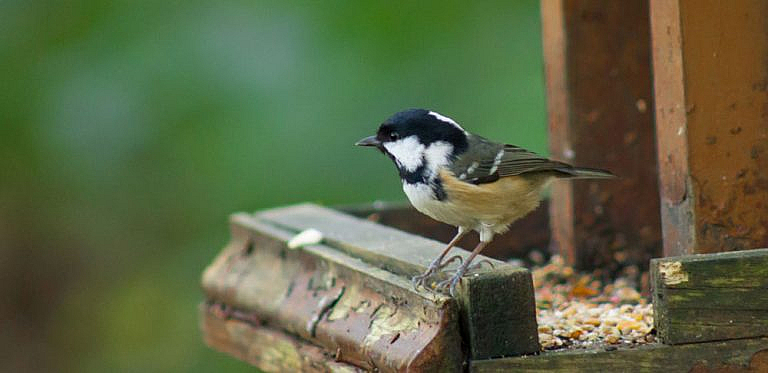Bird feeding is one of the most popular hobbies in the United States. Many people fail to properly maintain and clean their bird feeders, though, which can lead to illness or even death of birds. Properly cleaning feeders on a regular basis is important to kill bacteria and maintain seed quality. Birds will also flock to a clean feeder much more often than a dirty one.
A good, stiff brush is the best tool to have for the cleaning job. A simple bottle brush will do, but there are special ones available made just for bird feeders. Rubber gloves should be worn while cleaning with a mild dish detergent. Scrub the feeders well to remove all debris, using a mixture of warm water with 10% bleach added to kill germs. Immerse them in water if it is possible to get the interior dry when finished. Make sure to take apart plastic feeders and clean each piece separately. Wooden feeders are harder to keep clean, as they absorb moisture and the dirt and grime can soak in. Do not soak these in water, but briefly immerse to loosen surface debris, then scrub thoroughly. Rinse well with a garden hose if possible. Allow to dry completely in a sunny area before rehanging them. Hummingbird feeders should be cleaned every time that they are refilled. Since these tiny birds can take a long time to empty a feeder, it is a good idea to only partially fill them. This helps to keep the nectar fresh.
For those who prefer not to clean with bleach, a good alternative is vinegar. Adding a few cups of white distilled vinegar to warm, soapy water will clean effectively, though it is not as good at killing the bacteria. Simple Green is also a good, effective bleach alternative.
It is important to not only clean bird feeders, but also the area beneath them. If the feeders are hung on a deck or porch, sweeping up regularly may be all that is needed. If bird food is scattered on the ground, it will be necessary to rake or shovel up left over seed hulls and shells. When these are allowed to remain on the ground, they will rot and mold and can also make birds sick. In between cleanings, scrape debris out of feeder trays with a knife, and keep landings and perches wiped clean. Also try to let the birds completely empty the feeders before refilling. This will also help to ensure that the seed is fresh.
Bird feeders work best when they are hung in an area with a roof overhead. This will keep the rain and snow out and will help to prevent rotting. When the seeds inside the feeder get wet, they can be difficult for the birds to remove. In warm weather the seeds will often sprout, and those little seedlings can be a real challenge to remove. The roots will reach into cracks and crevices and take hold. This regular maintenance is not a pleasant job, but will keep our feathered friends happy and healthy, and will keep them coming to the feeders.
